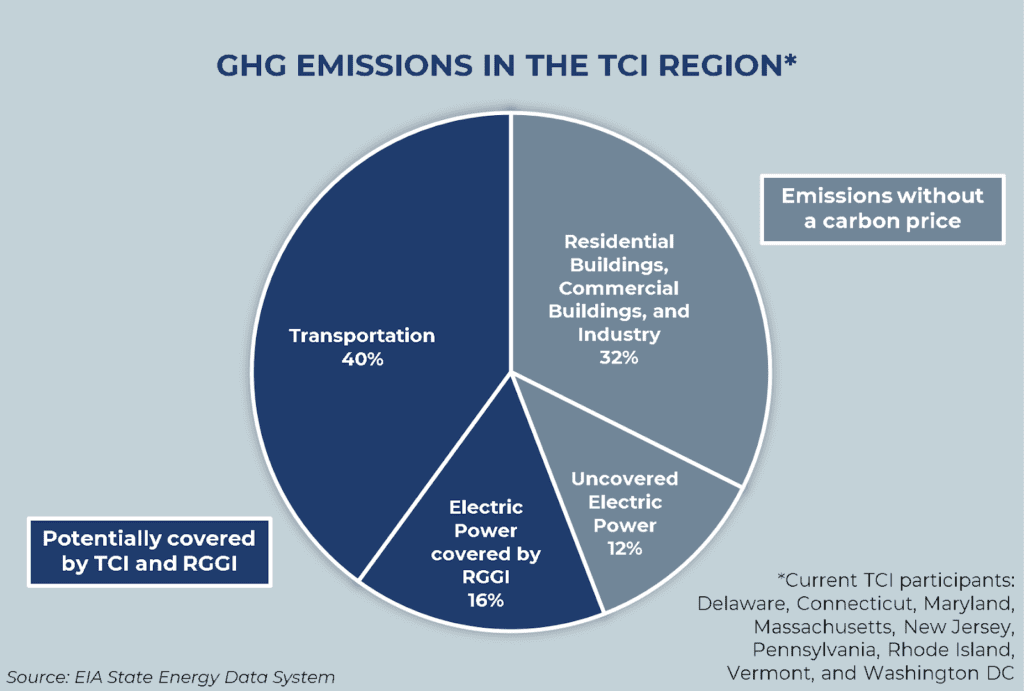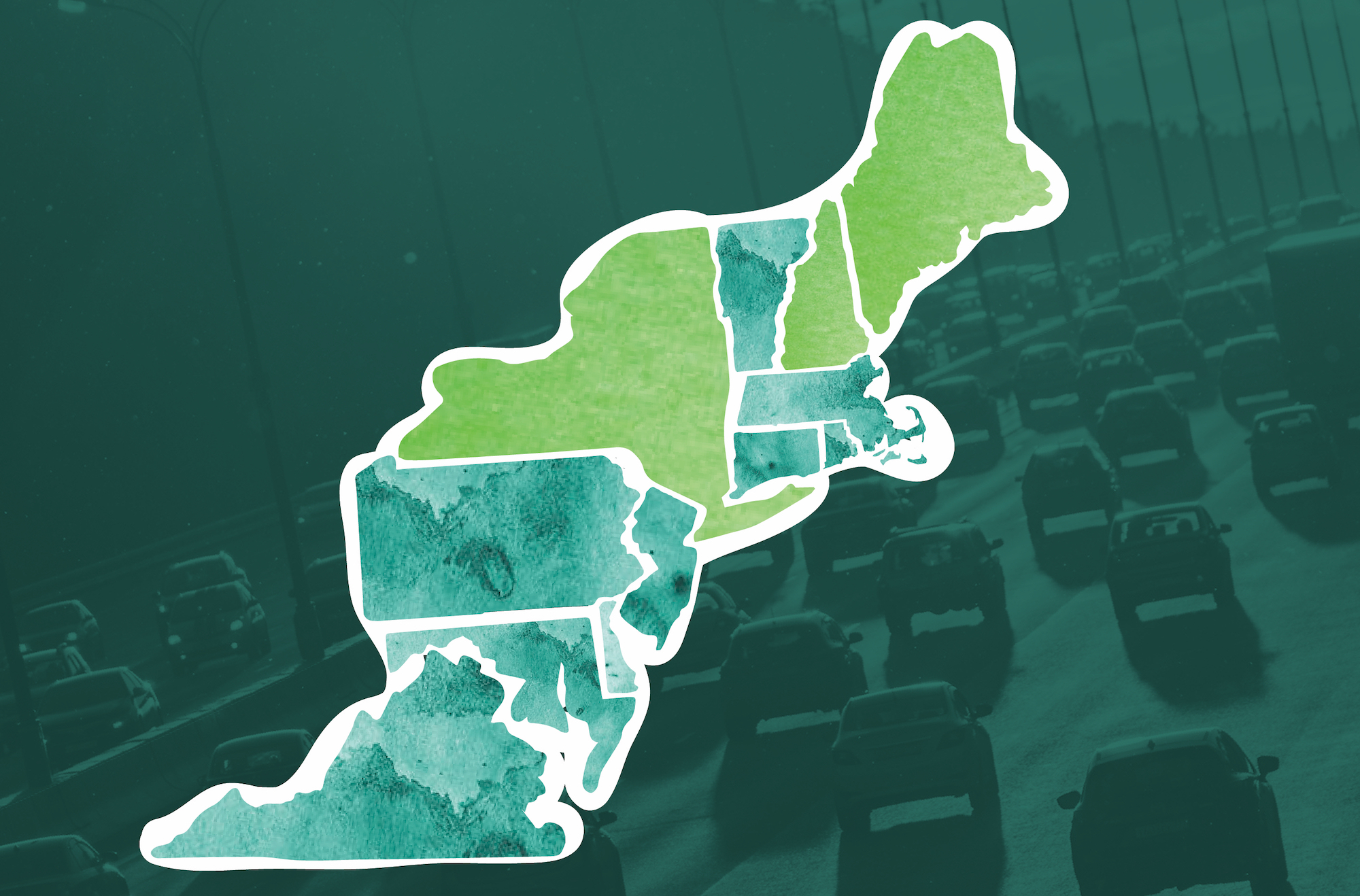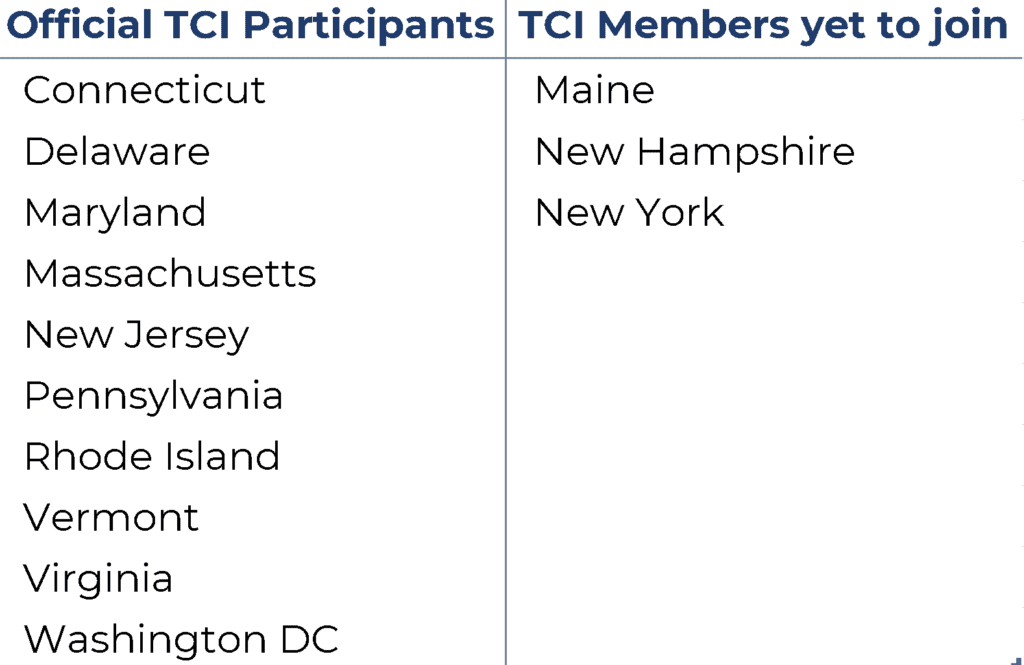In April of 2019, the coalition of state governments in the Northeast and Mid-Atlantic identified as the Transportation Climate Initiative (TCI) announced a planned schedule to design a regional cap-and-invest program for transportation emissions. Transportation is the largest source of emissions in the region, which means this program could play a major role in helping states achieve ambitious climate goals for 2030 and 2050.
The program would address more than just emissions. Traffic congestion in New York City, Boston, Philadelphia, Washington DC, and Stamford, CT costs the economy over $50 billion per year. Nearly every TCI state ranks in the bottom half of transportation quality in the country. TCI represents not just a need to address climate change, but also a larger desire to re-imagine the way we move people and goods around.
Many questions remain as to how such a program could play out. As such, it’s worth reviewing what exactly TCI is, what it could accomplish, and how we should be talking about it in the months ahead.
What is TCI?
The Transportation Climate Initiative is looking to tackle emissions and upgrade transportation in the Northeast and Mid-Atlantic region by building a cap-and-invest program for transportation fuels.The program would require fuel distributors to purchase permits according to the emissions from the products they sell. By decreasing the amount of permits available each year, states can incentivize clean transportation options and raise vital revenue for transportation investment.
Many of the TCI states already participate in a regional cap-and-invest program for the electricity sector, called the Regional Greenhouse Gas Initiative (RGGI). Since program launch in 2009, electricity emissions in these states have dropped by over 50%. Although decarbonizing the transportation sector will be a much heavier lift, a well-designed cap-and-invest program could make a big impact on achieving a clean transportation system in the region.
Of note, the program design currently includes 9 states out of 12 in the TCI coalition. The three remaining states are part of the conversation, but did not officially sign on to the commitment made last December.
What’s the Timeline for TCI
The program could be up and running as early as 2021, but staying on their self-imposed deadline would be an impressive feat for TCI leadership. The coalition of state governments is currently in “Phase 2” of policy development, which entails economic modeling, technical workshops, and stakeholder engagement between now and July. As of now, three public workshops are planned to discuss technical aspects, transportation equity, and ways to invest the revenue.
Starting in August, the TCI states plan to “develop specific regional policy options to share with the public, inviting feedback.” This gives them about 4 months to release a finalized regional policy in December of this year.
To finalize a full program design by year’s end will be a huge challenge. However, Georgetown Climate Center has been preparing for this moment, with preliminary analysis and technical assistance into how the program could take shape. Combined with consultant modeling over the next few months, there should be plenty of data-backed evidence to build a sensible program in a timely manner.
A wide variety of groups are plugging into the TCI process, from carbon pricing advocates to transportation groups to community organizations. Pulling these groups together, let alone developing a policy that reasonably considers their respective priorities, takes an immense amount of time and effort. The quick time frame for action puts TCI leadership at risk of ignoring key voices in the name of expediency.
The Conversation Moving Forward
Currently, Massachusetts executive officials either chair or co-chair the Leadership Team, Executive Policy Committee, Technical Analysis Workgroup, and Investment and Equity Workgroup. As one of the most climate-ambitious states in the region, it is both encouraging to see Massachusetts drive the TCI conversation forward.
What remains to be seen is if other states are willing to enact the kind of program that Massachusetts envisions. These states all have various emissions targets and other initiatives at play, meaning that the final TCI program design may be sufficient in some states and insufficient in others. The devil is in the details here, as states will negotiate the vital technical aspects of the program over the next few months.
The first conversation, happening at the regional level, is over technical aspects of the program – the cap trajectory, price floors and ceilings, and points of regulation – that will determine the program’s ability to reduce GHG emissions. Environmental groups with technical capacity will play a vital role in analyzing and commenting on the technical decisions made by TCI leadership.
Meanwhile, states will decide for themselves how to use their own revenue. Each state will need all the research and stakeholder engagement it can get in order to figure out how transportation investments can best reduce emissions, spur local development, and best address the needs of local communities.
TCI is an important step forward, but is not the whole solution
As the largest source of emissions in the region, and one of the most difficult sectors to tackle, transportation is the first priority when it comes to climate change policy. However, it’s important to recognize that regardless of how effective TCI is, there will be more work to do other sectors of our economy.

Several states in the TCI region have been considering their own carbon pricing bills. Rather than compete for attention, these bills can complement the Transportation Climate Initiative by addressing the gaps that RGGI and TCI leave behind. The conversation is focused on transportation right now, and for good reason. But given the short window of action outlined by the IPCC’s report, we can’t afford for other sectors to be far behind.











